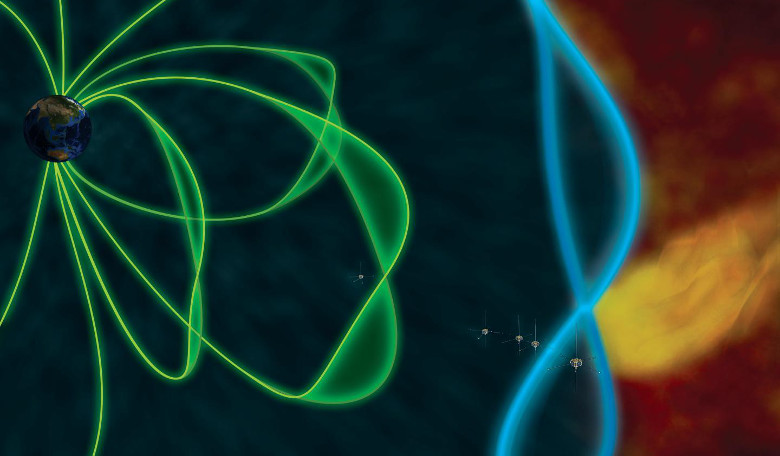With a melodious sound akin to that found in an orchestra’s percussion family, it seems our planet could be teaming up with Mercury, Jupiter and Saturn to belt out tunes to the rest of the Solar System, as new research has shown that when struck by powerful impulses such as plasma jets, the protective magnetic bubble surrounding our planet sounds like a enormous drum.
Theoretically proposed over 45 years ago, scientists have long thought that the abrupt boundary between Earth’s magnetic field and the solar wind – the magnetopause – acted much like the top of a drum head when so-called magnetosonic waves pulsed along it.
The waves act essentially like sound waves and move through a medium in the same direction as, or the opposite direction to, the direction of propagation of the wave. If you think of how the coils in a stretched slinky toy increase and decrease as you pull it apart and let it go, the effect is pretty much the same.
In the case of our planet, the slinky’s two ends represent the Earth’s magnetic poles and they act as the rim or edge of the drum to keep the wave vibrating back and fourth along the surface of the magnetopause (or drum head). The resulting sound though is less like a drum and more like the noise a giant jelly might make as it wobbles around and you stuck your head inside to listen. Or what you might hear if you jumped up and down on a large water bed or on a trampoline underwater.
However despite knowing that the world’s biggest drum is the Earth itself, it has been very hard to listen out for this peculiar sound in the last several decades. "Given the lack of evidence over the 45 years since they were proposed, there had been speculation that these drum-like vibrations might not occur at all," said Martin Archer, space physicist at Queen Mary University of London and lead author of the new paper.
But, with the well-placed alignment of five satellites from NASA's Time History of Events and Macroscale Interactions during Substorms, or THEMIS, mission, which just happened to be in the right place at the right time, eventually scientists were able to record the drum-like oscillations after a strong isolated plasma jet slammed into the magnetopause. The data helped solidify the theory and rule out all other possible explanations for the oscillations and the sound it created.
"The authors make great use of observations from a time early in the mission when the spacecraft followed each other along their mutual orbit like pearls on a string," said David Sibeck, THEMIS project scientist at NASA's Goddard Space Flight Center in Greenbelt, Maryland. "In this fortunate case, the THEMIS spacecraft were in just the right place to see the drumstick and hear the drum."
This discovery is key to understanding the mechanics of Earth’s protective bubble, as while the wave itself remains on the magnetopause’s surface, the vibrations ultimately work their way down into the inner magnetosphere triggering ultra-low frequency waves, which affect things like radiation belts, the aurora, and even the ionosphere, said Archer.
Though it goes without saying that we have a lot on this planet that the magnetopause protects – it helps keep our satellites safe on the edge of space and it also helps preserve our planet from the harmful radiation of the solar wind.
Understanding all that is does and how it behaves will not only benefit our planet but it may also help researchers spot this phenomenon on other planets with magnetospheres, like Jupiter, Saturn and Mercury, and what effect the waves may have in those systems.
Click here if you would like to listen to the beat of the world.











